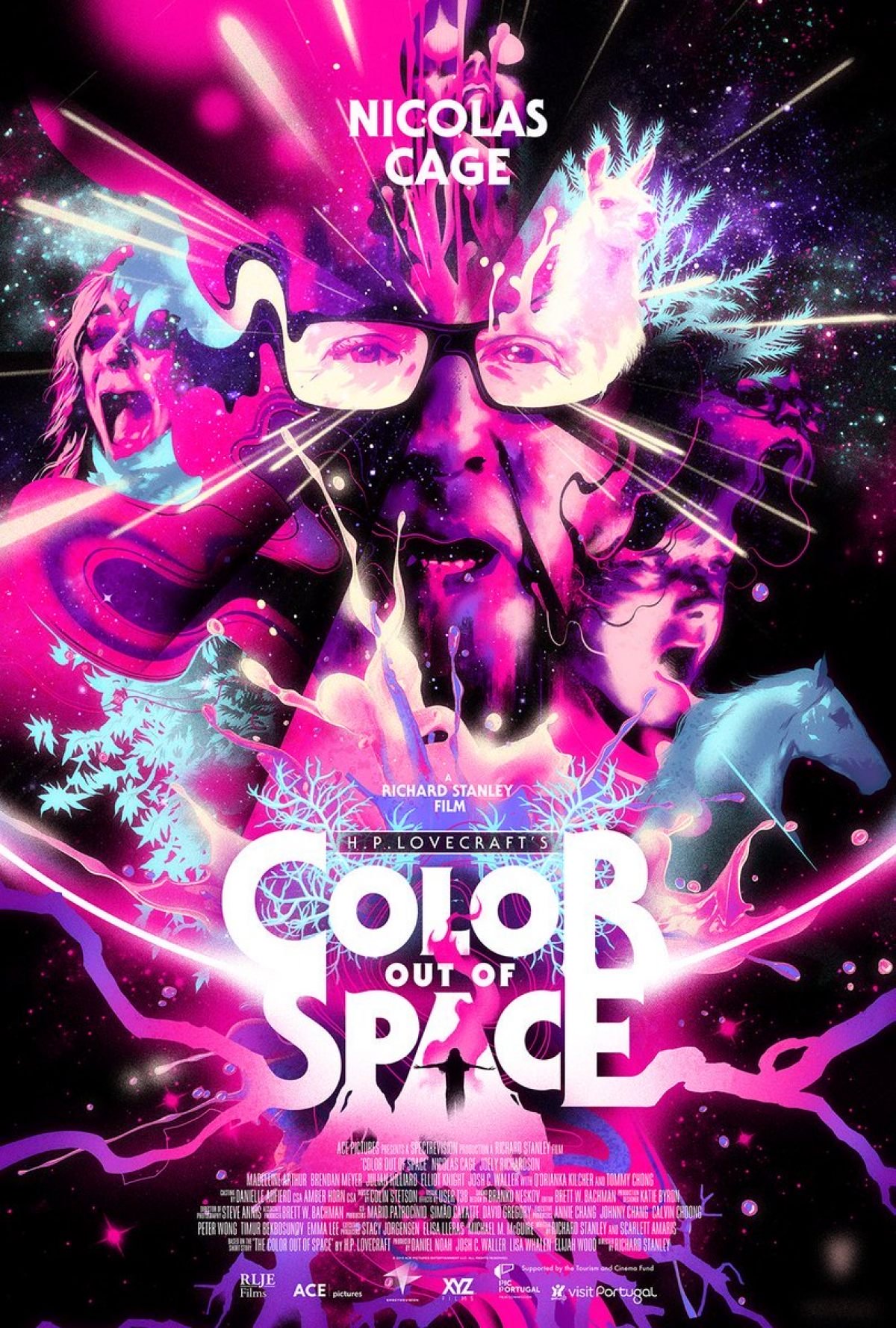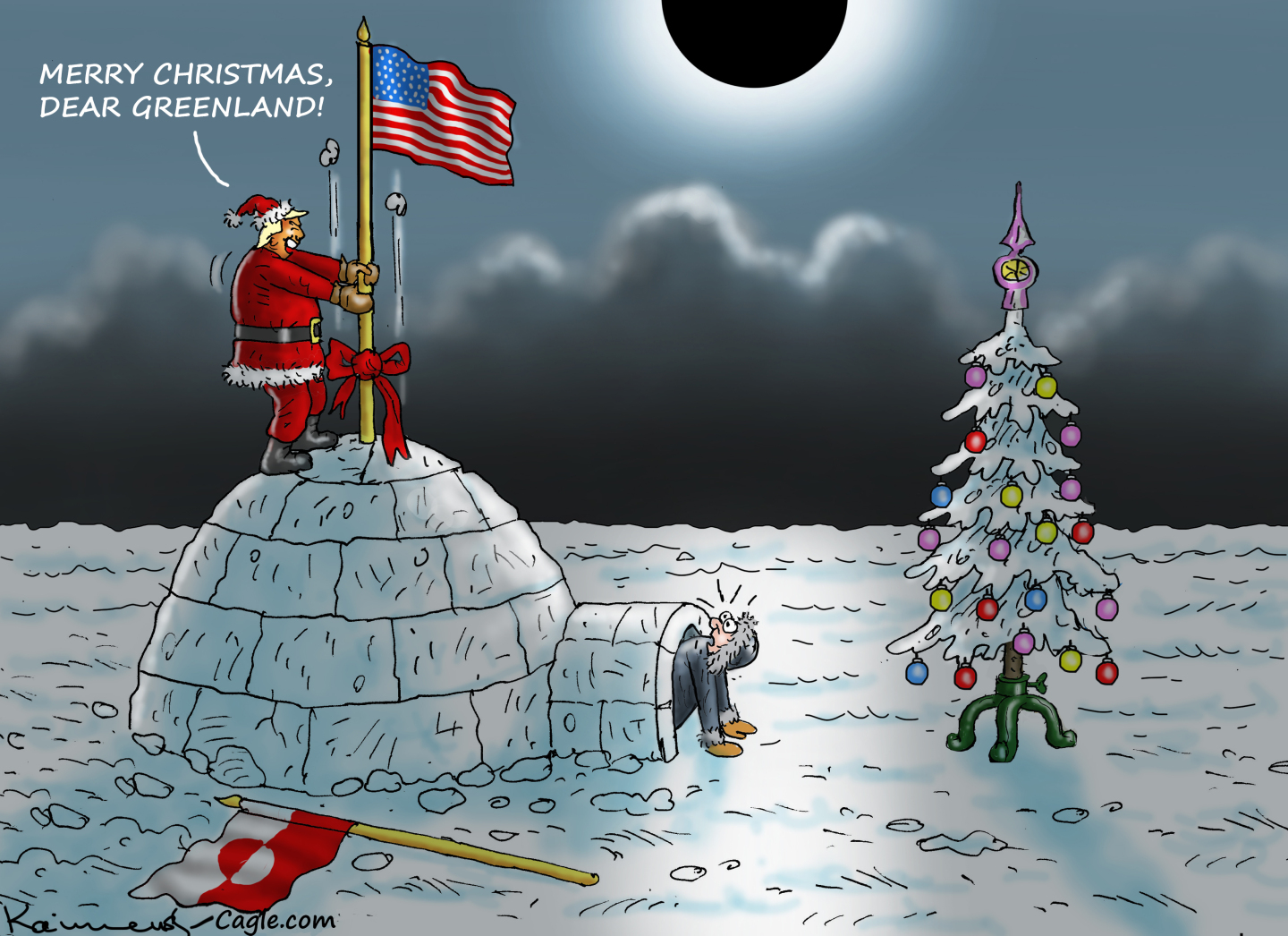Color Out of Space has no interest in the highbrow horror trend
Tired of horror movies masquerading as indie darlings? Here comes Nicolas Cage with your trashy, over-the-top reprieve.


When H.P. Lovecraft published "The Colour Out of Space" in Amazing Stories in 1927, he wrote with eldritch poeticism of "a frightful messenger from unformed realms of infinity beyond all Nature as we know it." In director Richard Stanley's film adaptation, out Friday, you might brace for something a little more along the lines of Nicolas Cage shouting, "Do you know how much those animals cost us? They are alpacas! Alpacas!!!"
This isn't necessarily a bad thing. What it is, though, is unexpected. Maybe not from Stanley, whose last outing as a director was in 1996 when he was famously fired from The Island of Dr. Moreau, but certainly for 2020, when so-called "elevated horror" is unquestionably the cinéma du jour. But even as the rest of the horror genre seems to be clamoring toward self-serious auteurism, Color Out of Space harkens back to horror's more trashy, gonzo, B-movie roots — and is ultimately all the more bold and brilliant for it.
While Lovecraft's original story recounted the "strange days" that befell the fictional town of Arkham, Massachusetts, in the 1880s, Stanley's script transports the tale to modern day. Cage plays the L.L. Bean-wearing Nathan Gardner, who has moved to his father's old house in the woods with his three kids and wife (Joely Richardson) who's in recovery for cancer. It's a boring but picturesque place to live (one that also happens to pick up the weather reports for Innsmouth and Dunwich on the TV) — boring, anyway, until a meteor lands in the family's backyard. What unfolded over years in Lovecraft's original transpires in just days in Stanley's retelling, as the Gardners get sick and lose their minds due to the effects of the bloodthirsty, gaseous "color" from the meteorite that permeates their land and water. Through it all, there are enough fuchsia blood-splatters, shrieking, toothy monsters, and over-the-top deaths that Color Out of Space almost certainly has a lock on a century's worth of midnight movie screenings to come.
The Week
Escape your echo chamber. Get the facts behind the news, plus analysis from multiple perspectives.

Sign up for The Week's Free Newsletters
From our morning news briefing to a weekly Good News Newsletter, get the best of The Week delivered directly to your inbox.
From our morning news briefing to a weekly Good News Newsletter, get the best of The Week delivered directly to your inbox.
Still, I can't shake the feeling that in some parallel universe, indie powerhouse A24 made its own version of Color and is selling accompanying $60 sweatshirts; Lovecraft's heightened language easily could have loaned itself to being turned into an "elevated horror movie" instead of, well, this. While fans and film historians have pushed back on the term "elevated horror," arguing that it is "just a snobby way of looking down at mainstream horror," it's true that there has been a particularly intellectual and glossy shift in the packaging and marketing of the genre over the past 10 years. Young up-and-coming horror directors have angled to make themselves recognizable, auteurist "brands": think Jordan Peele (Get Out; Us), Ari Aster (Hereditary; Midsommar); Robert Eggers (The Witch; The Lighthouse); Jennifer Kent (The Babadook; The Nightingale); and Ana Lily Amirpour (A Girl Walks Home Alone at Night). These films tend to be visually impressive and the scripts sincere, with the directors reaching to make greater social and political statements with their supernatural allegories. The films spur scholarship and thousand-word think-pieces, and are shown in fancy theaters where you can order burgers and alcoholic milkshakes. Most importantly, though, these are movies that are dressed up with massive marketing campaigns, angled for awards, and meant to appeal to wider audiences beyond those typically attracted to horror.
All it takes is looking at a narratively comparable work to Color Out of Space to understand the difference. Alex Garland, who is undoubtedly the most Lovecraftian of the elevated horror directors due to his slant toward sci-fi, adapted Jeff VanderMeer's Annihilation in 2018. It has a familiar premise: a strange, indescribable color associated with frightening mutations — something "beyond all Nature" — descends on a region. But while Annihilation was distributed by Paramount Pictures, starred Natalie Portman, and had a budget upwards of $40 million, Color Out of Space is distributed by the indie licensee RLJE films, stars Tommy Chong as a hermit who owns a cat named G-Spot, and had a modest budget of $12 million. The former movie was reportedly considered by one producer to be too "intellectual" and "complicated"; the latter seems destined to primarily be watched stoned.
Still, Color Out of Space makes it work, shaking off any preoccupations with appealing to the A24 crowd by leaning fully into its trashiest, B-movie moments. The script is almost willfully bad — Nathan at one point tells the town mayor, utterly inexplicably, about how he was in the middle of having sex with his wife for the first time since her operation when the meteor hit. The casting of Cage, who is at the top of his game, is also a deliberate choice; while Cage is intentional with his performance, he is also at a Wicker Man-level of memeable, from raging in a car to throwing tainted fruit in a garbage can like he's shooting baskets to lecturing his teens about alpacas being the "animal of the future." A favorable review in The San Francisco Chronicle still managed to call Color Out of Space "trashy," "silly," "ridiculous," and comment that "considering its origins as an H.P. Lovecraft story, it should have been much better."
The difference, though, is that while there are still lots of actually bad and boring horror movies getting made, Color Out of Space isn't either of those things. It just happens to borrow its vocabulary more from when horror movies weren't taken seriously, rather than pander to audiences who might expect sophisticated messages and gorgeous cinematography to accompany their jump-scares. Although Color may still flirt with more "elevated" elements at times — like its great score by Hereditary's Colin Stetson, or a brief news report that teases a possible climate change reading — the film ultimately prioritizes a screaming Nic Cage and ooey-gooey monsters over any larger commentary.
A free daily email with the biggest news stories of the day – and the best features from TheWeek.com
For a lot of people, that won't be their thing. I mean, it really, really won't be their thing. But to anyone who's ever wished modern horror was, well, a little rougher around the edges, then boy, do I ever have the movie for you.
Want more essential commentary and analysis like this delivered straight to your inbox? Sign up for The Week's "Today's best articles" newsletter here.
Jeva Lange was the executive editor at TheWeek.com. She formerly served as The Week's deputy editor and culture critic. She is also a contributor to Screen Slate, and her writing has appeared in The New York Daily News, The Awl, Vice, and Gothamist, among other publications. Jeva lives in New York City. Follow her on Twitter.
-
 A foodie guide to Edinburgh
A foodie guide to EdinburghThe Week Recommends Go all-out with a Michelin-starred meal or grab a casual bite in the Scottish capital
-
 Political cartoons for December 24
Political cartoons for December 24Cartoons Wednesday's political cartoons include Christmas in Greenland, grinchflation, and California floods
-
 Is there a Christmas truce in the Starmer farmer ding-dong?
Is there a Christmas truce in the Starmer farmer ding-dong?Today’s Big Question There’s an ‘early present’ for farmers but tensions between Labour and rural communities remain
